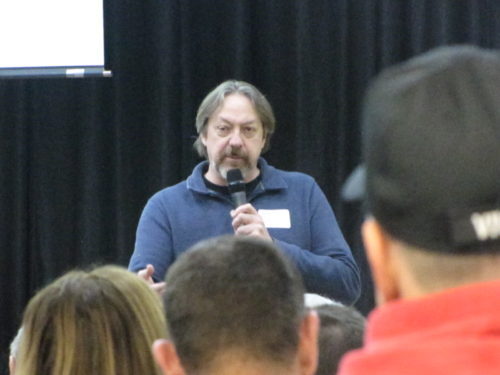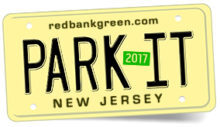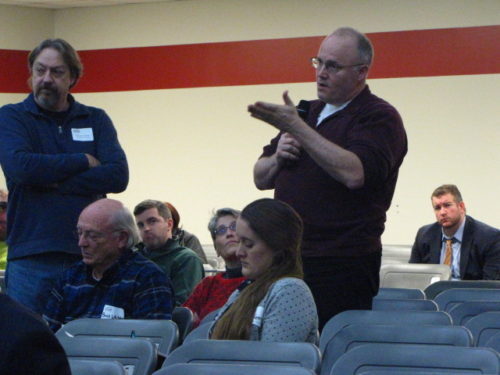
By JOHN T. WARD

There, members of the Red Bank Business Alliance served up their perspectives on what they see as a longstanding problem that’s worsened in recent years under a changeover from a retail economy to one driven by restaurants and entertainment.

The session, which drew some 75 residents, merchants and town officials, came against the backdrop of a recently adopted redevelopment plan, which sets guidelines for private builders interested in creating a 773-vehicle garage — maybe along with some homes and commercial spaces — on the site of the White Street municipal lot.
No formal plans have yet been submitted; the deadline for that is April 7. And thus far, the borough council has been largely silent about issues of garage ownership and how a new structure might be paid for. The borough owns the 2.3-acre lot.
Mindful of the fact that residents shut down efforts by the borough to build its own garage in 2001 and 2005, members of the newly formed business alliance are hoping to help shape public opinion in advance of an planned debut of proposal on April 26.
Often in small towns, said jeweler and event moderator Joel McFadden, “businesses and resident feel like they’re at odds with each other,” a situation he said he hoped the forum would prevent.
“Businesses need help from residents” in getting a solution to a parking shortage, said Hobbymasters owner Alan Placer.
“We’re not trying to sell you a garage,” architect and planner Mike Simpson told the audience. Rather, he said he wanted to put the unsatisfied demand for parking in historical perspective, which he said shows its been a problem for generations.
Other speakers sought to drive home the point that a successful business district pays more taxes in absolute terms, and carries a heavier portion of the overall tax burden than homeowners, and that the reverse is also the case.
“If the business district fails, the only place we can turn to make up that lost revenue is to the residents,” said Red Bank RiverCenter executive director Jim Scavone.
Some of the conversation focused on the scope of the actual parking deficiency.
Simpson, who was involved in crafting the 1995 Master Plan, said a study in 1999 estimated the shortfall at between 300 and 1,200 spaces. Scavone said the figure “is probably higher” now, owing to the rapid changeover from a retail base to one driven by restaurants and theaters.
But homeowner Bruce Whitaker of Prospect Avenue aired a concerns that the council and business community was forging ahead without any recent studies quantifying the parking shortage.
“It seems to me before somebody spends $16 million on a parking garage that we should have some facts,” he said.
Whitaker said fees had to be factored into a “what-if” scenario as well. “I’ve heard people say they don’t want to pay fifty cents [in parking fees] to get a cup of coffee. Well, what happens when it’s $2 to park?”
Sabrina Wilhelm urged officials to get the issue of parking by Red Bank Catholic students under control during the daytime, when many of their vehicles occupy spots business owners would prefer be available to shoppers.
“Red Bank Catholic is not really interested in having that conversation,” Placer replied, but as one of the town’s economic drivers, “it’s not their job to provide parking. It’s the town’s job.”
McFadden advocated for creation of a parking authority to manage the inventory “instead of having this random willy-nilly” approach.
RBBA President Stephen Catania said the event showed that “there is an opportunity to have more dialogue with the community.”





















